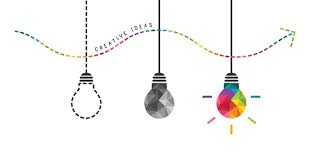0 Finding Your Creative Flow
- Skills Development
- by Nicole Bridge
- 08-19-2023

All of us have things we love to do outside of work that keep our attention rapt. How great does it feel to get so involved in what you’re doing that time flies and you can think of nothing else! In this month’s newsletter, we’re going to talk about finding that same intensity of focus in our work.
Making space to be creative
Before we dive into the concept of a “flow state“ let’s make space in our schedules for being creative. Here’s why: the most optimal time for reaching deep concentration and originality is when the challenge at hand is compatible with your competencies. Cleaning the junk out of your email inbox, for example, is unlikely to inspire the greatest contributions to your work. That’s because deleting blinking ads and coupons is annoying but not very hard to do. Try to automate mundane tasks that keep things orderly but don’t require a lot of heavy lifting. In the case of email housekeeping, you could tidy your inbox at the same time every day. Set a 10-minute timer to avoid overthinking the process. Make folders for things you aren’t ready to delete but shouldn’t be distracted by right now.
Perhaps email isn’t your easiest task but take the effort to decide what is. To isolate the items in your workload that can be compressed into automation, make a list of your departmental responsibilities. Put them into categories such as “simple”, “moderately challenging”, and “complex.” Tasks that don’t take up too much brain power shouldn’t overstay their calendar time either- even the ones that are tedious. Plan your approach for these tasks, be prescriptive in how often you’ll tackle them and how long they should take, and then slide them in your schedule at regularly occurring intervals.
“The Secret to Happiness”
Now that your daily routine is a little airier, it’s time to talk “flow state.” First, some background on the topic. Hungarian psychologist Mihaly Csikszentmihalyi gave a Ted Talk on what he claimed to be “The Secret to Happiness.” Growing up in post-war Europe, he was surrounded by hopelessness. He noticed that some of the adults around him remained devastated by WWII and couldn’t find their way around the sadness. He began considering what makes people truly happy and quickly realized it wasn’t money. He zeroed in on creatives such as artists and musicians because of the devotion they have for their craft even without the promise of “making it big.” What would make someone work that hard for such little reward? His years of study revealed that all kinds of people take on hobbies and sports they find so satisfying that they lose all sense of space and time when doing them. Their contentment is their reward.
Csikszentmihalyi says we can all access our creativity and retreat into this intuitive mental state or “flow.” We’re not talking about things that are a cinch (please see section on automating tasks that come easy to you!). The idea is to find yourself so deeply focused on whatever you are doing, that nothing- not your phone, fiddling with the music, or wondering how long until lunch- is going to distract you. It’s being completely present. Not only is regularly dipping into a “flow state” satisfying, if we can access this process at work, flow can help us to be productive, motivated, and even foster an appreciation and sense of loyalty for our organizations.
Finding your flow state
It’s true that you can’t totally manufacture the flow state. Often, getting in the zone is most powerful when it happens spontaneously. But you can certainly optimize the chance of finding your flow by following these steps:
- Choose the right task. We already decided what’s too easy. A recent article in BBC Worklife warned, alternatively, against choosing something unfamiliar because the process of learning something new can be too frustrating. You can’t get the flow going if you’re irritated. - Pick something you’ve done before, and you find a little bit challenging but isn’t so unfamiliar that you get stressed either. Just like you did with the simple tasks in your workload, try making a list of the exciting components of your job. When do you feel most invested? What captivates your attention? What do you find meaningful about your work?
- Ready your work environment. A quiet, orderly workspace, with minimal distractions is best. Put your phone away and close your calendar. Put on a sweater if it’s chilly. Some people like working with quiet instrumental background music, others prefer stone silence. You might also try a “brown noise” playlist on Spotify. Brown noise is a low-frequency sound that is meant to provide a feeling of calm and focus.
- Set a clear goal. This step is very personal, of course. Start broad- what is the overall purpose of this exercise? To improve upon a certain system? From there, continue fine tuning your thoughts to establish your desired outcome, how to measure your success and report your results.


